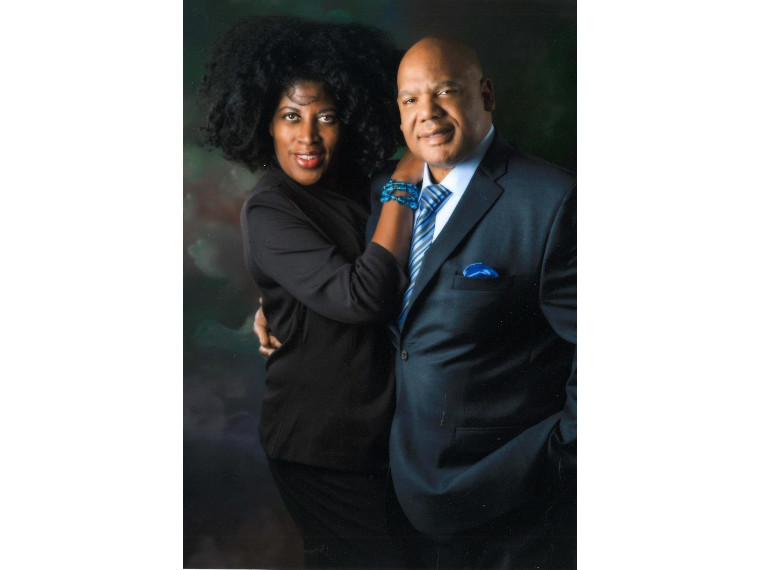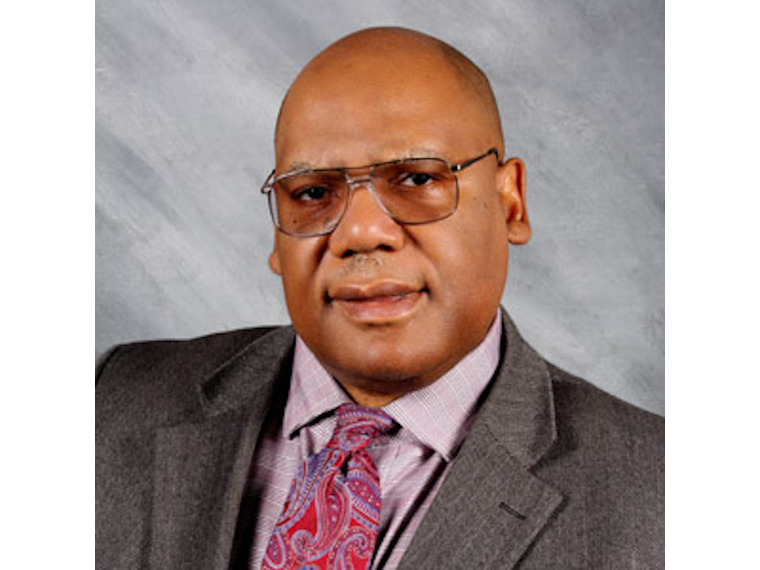Photo: James Brown, MD
Written by Tanya Terry
James Brown, MD, board certified in family medicine, who has been practicing physician in Genesee County for 20 years, has seen approximately eight-10 patients who have tested positive for COVID-19; the disease caused by coronavirus. He shared his knowledge about the infectious disease that has greatly affected the Flint community. Brown and his wife, Semaj Brown, created Health Collectors LLC, which produced two radio broadcast shows on Cumulus WCK AM and WFLT AM Gospel Radio.
According to Brown, the novel coronavirus is new to human beings. Brown said no one had any resistance.
Coronavirus began in Wuhan, China. Some studies say it began December 8, and other studies say late November. It spread through all the provinces in China-then all over the world.
Brown said the Centers for Disease Control and Prevention initially advised masks were not necessary.
“Then, it changed to do not wear the masks that the medical personnel would wear and instead make your own,” Brown said. “But studies have shown that the homemade mask or handkerchiefs only get about 45% – 68% of the virus.”
Also, Brown said the coronavirus is very small.
“It’s only 0.3 microns,” he said. “The N95 mask stops 95% of the virus in the air.”
According to Brown, regular surgical masks stop about 76%, and respirators get 100%. Brown said personal protective equipment has become more available since the federal government has allowed masks directly from Chinese and Korean companies to be sold in the United States, and he suggests surgical masks, at least, with the metal nose piece placed and formed in terms of the bridge of the nose. The bottom of the mask needs to be pulled below the chin. Masks with filters with electrostatic process trap small particles better, as well.
“There are no treatments for coronavirus and no vaccines,” Brown said.
Studies for treatments and vaccines are in the early stages.
On the other hand, the seasonal flu, known as influenza, has a treatment and a yearly vaccine. In addition, unlike the flu, the coronavirus occurs in warm climates.
The symptoms of influenza and coronavirus are generally the same, according to Brown.
The original symptoms identified regarding coronavirus were shortness of breath, fever and cough, which was expanded to include loss of smell and taste, muscle aches and fatigue.
“Other than the loss of smell and taste, generally you can’t tell the difference between the symptoms of influenza and coronavirus,” Brown said.
He said therefore it is important to be tested.
Also, children are more likely to catch and spread influenza. They have large volumes of virus in their nasal secretions, and, after infection, shed this for days, according to medicalxpress.com. The website also points out children often have poorer hygiene practices and often cough over those closest to them.
“With the coronavirus, studies show children generally catch the virus from adults,” Brown said.
He said the numerous studies on this topic began in China, which indicate the mortality (the number of people who die) and morbidity (the number of people who become ill) are different for the coronavirus compared to the flu.
“Eighty percent of people who get coronavirus have mild symptoms or are asymptomatic (show no symptoms). The major difference is 24-48 hours before a person shows any symptoms at all with the coronavirus, they’re shedding this virus, meaning they can infect others.”
Brown said with the flu, on the other hand, a person is most infectious a few days after showing symptoms.
He said 15% of those contracting the coronavirus have severe symptoms, requiring oxygen, and 5% will require a ventilator.
A virus is genetic material without a cell wall. Antibiotics are for bacteria, not viruses.
Brown explained the coronavirus enters the human body through the mucous membranes (eyes, nose and mouth); through the nasal passages, through airborne aerosolized water drops or from contact with surfaces. An example of this could be if a person was not social distancing, and water droplets from the cough or sneeze of a person in front of them in a line at the store land on their lip or elsewhere on the face.
“Then, the coronavirus finds its way to your lungs.”
According to Brown, the virus has an affinity for one type of cell in the body; the ACE-2 receptor in the lungs.
“That’s the point of contact. Those red spikes you see on TV on the coronavirus are called the M protein. It binds to the ACE-2 receptor in the lungs. Then it takes over the cell in the lungs and forces the cell to make millions of viruses.”
The immune response of the body is to fight this invader off.
“That’s what causes the problem. It’s overwhelming. It’s called the Cytokine response. The body sends all available cells to the lungs to attack the invading virus.”
There’s a lot of fluid build- up, mucous, and then it actually destroys the alveoli, where the air exchange takes place in the lungs.
“It destroys the alveoli, and there’s no air exchange.”
This is how people end up on ventilators, according to Brown.
Brown clarified why African Americans, Hispanics and those within the Navajo Nation are affected by coronavirus disproportionately. For African Americans, this is due in part to a large portion of African Americans having other chronic diseases.
“If a person has high blood pressure, diabetes, emphysema and smokes cigarettes, their lungs are already in an inflamed state, and that just makes the infection worse.”
African Americans may also live in close proximity to each other. There may be multiple generations living in the home. This makes social distancing much more difficult.
Another problem nationwide is the disproportionate rationing of available resources as it pertains to the African American community. African Americans have a higher degree of heart disease, high cholesterol, diabetes and cases of cancer. They also have more aggressive kinds of cancer.
African Americans are more likely to be employed in the service sector as essential workers, therefore having a great risk of being exposed to the coronavirus.
“There have been reports in publications across the country about African Americans going to more than one emergency department and not being able to receive a coronavirus test, and subsequently dying from the institutional racism inherent in the medical profession.”
In addition, Brown mentioned there was a fear among African Americans about going to the hospital because of a shared history of not having the best outcomes when they do.
“The Tuskegee experiment is still in our racial consciousness.”
The Public Health Service (PHS) started the study in 1932 in collaboration with Tuskegee University. Of 600 African American participants, 399 had latent syphilis, with a control group of 201 men who were not infected. The participants were promised free medical care, but instead received placebos, diagnostic procedures and other ineffective methods of treatment.
Brown credits the high number of cases in New York in part to the population density in New York, especially in the Bronx, in which a large number of the Latino community live.
“Now the Navajo Nation, I have a colleague that was working there. They got hit very hard by this coronavirus, in terms of many of the elders. They have limited access to quality medical care. Many of the diseases that I mentioned that are prevalent in the African American community are also widespread in the Latinx community, as well as the Navajo Nation. In addition, stress lowers immunity and makes a person more susceptible to infection, including coronavirus.”
Brown also said the information he and others currently have access to was calculated prior to protests, in which there is a lack of social distancing and few people wearing masks.
“The incubation period is two weeks in terms of when the symptoms are going to appear. We won’t know for two weeks from the first day of protests how large the spikes are going to be.”
Currently, the spread of the coronavirus is increasing in rural areas, according to Brown.
Also, at some meat processing companies Brown said workers are in very close quarters with little or no protection and have been forced to go back to work.
Besides social distancing and wearing a face mask, Brown’s recommendations include using hand sanitizer with at least 62% alcohol, proper nutrition, prayer, exercise, a positive mental attitude and educating one’s self through reading and reputable sources. He believes the decisions made by Governor Gretchen Whitmer and Joneigh S. Khaldun, MD, MPH, FACEP; the chief medical executive and chief deputy director for health in the Michigan Department of Health and Human Services(MDHHS) indicate they are both top of the line people.
“We are in a crisis. We are in trouble. Be smart, and be safe.”



